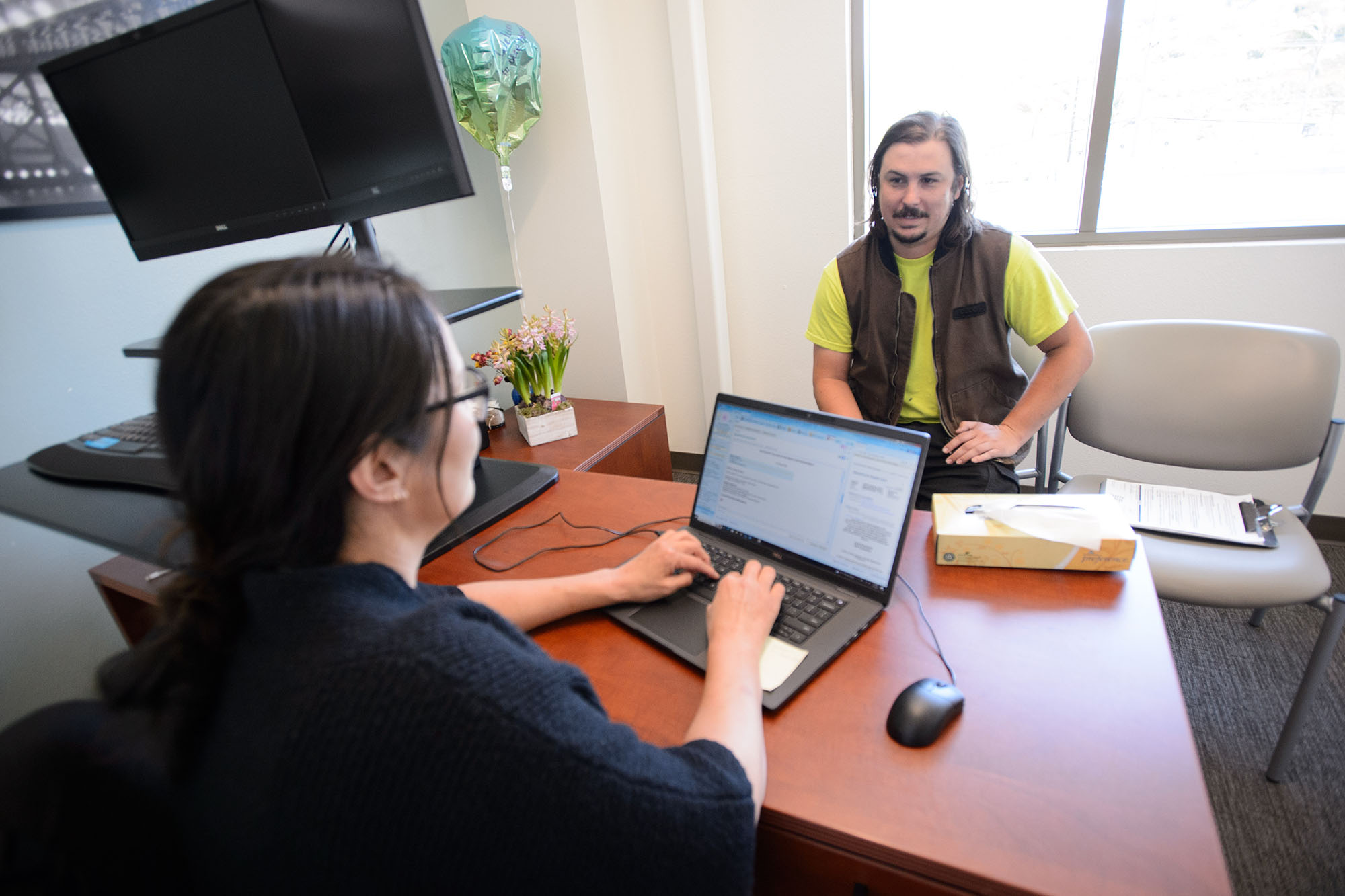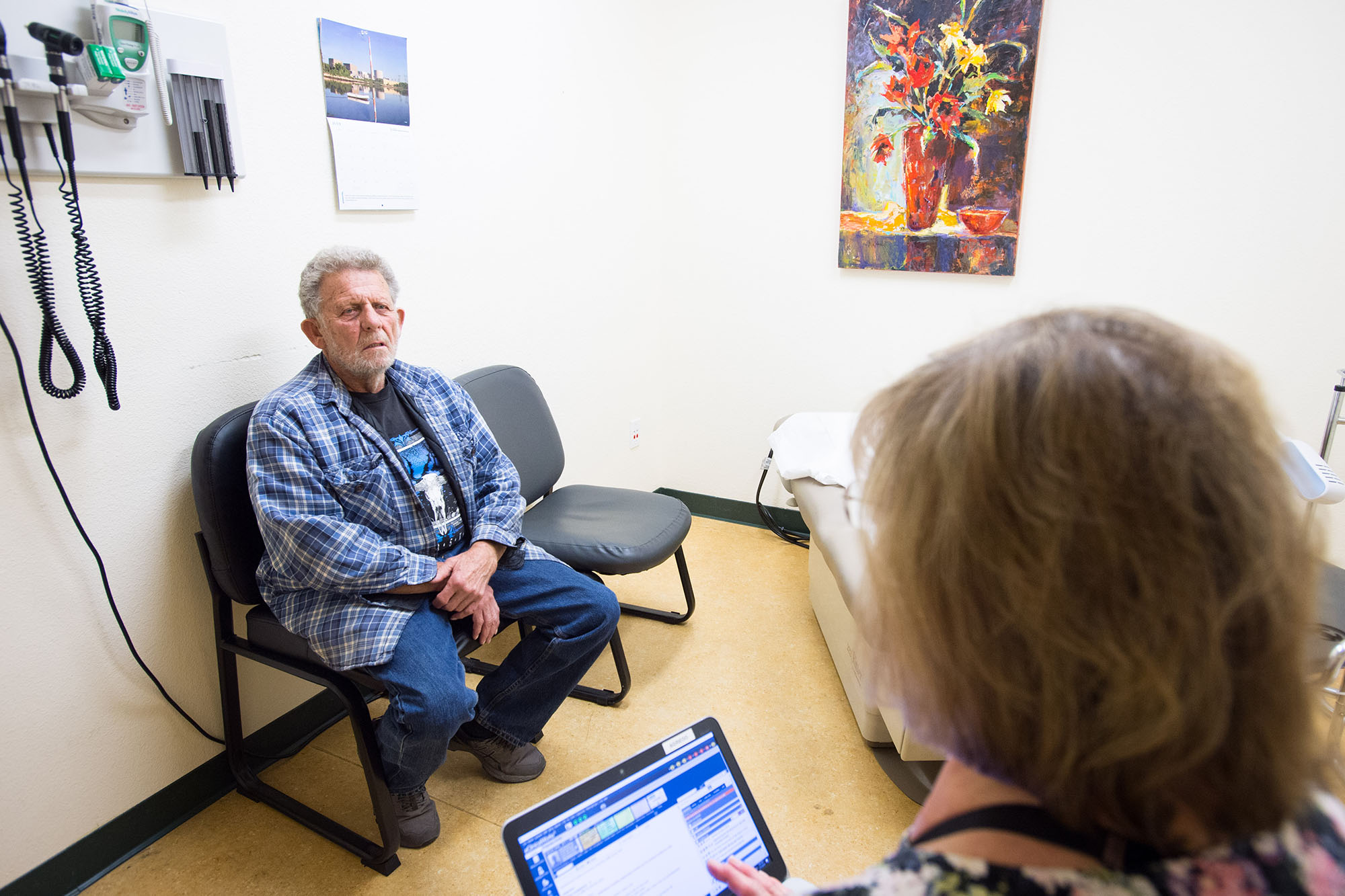|
Getting your Trinity Audio player ready…
|

At a time when California faces a substantial budget shortfall and an uncertain revenue picture, many stakeholders were braced for budget cuts affecting important state health policies in the fiscal year that began July 1. But the legislature and Governor Gavin Newsom avoided cuts to core health programs in the new budget and made significant investments in health care generally and the Medi-Cal program in particular.
Without improved revenue conditions, however, tough decisions and more uncertainty await as the state allocates dollars for health care, programs, and people in fiscal years ahead.
I recently asked Katie Heidorn, CHCF’s director of state health policy in Sacramento, to talk about the big health policy takeaways from the Fiscal Year 2023-24 state budget and how it advances the causes of health equity, access, and affordability, while addressing the workforce and quality of care needs of all Californians.
Heidorn is a veteran at analyzing the state budget and health policy. In previous roles at Insure the Uninsured Project (ITUP), the California Health and Human Services Agency, and the California Senate Appropriations Committee, she helped policy leaders make informed decisions about health care. Our conversation has been edited for length and clarity.
Q: One of the biggest health care wins in the state budget over the last few years was the expansion of Medi-Cal eligibility and the removal of enrollment barriers that enabled more Californians to be covered. Did the state continue to make progress this year?
A: One of the most exciting aspects of the new state budget is that it preserves the major health coverage gains of recent years. The budget keeps California on track to ensure that immigration status will not block Medi-Cal enrollment for any eligible Californian with a low income starting in 2024. This is major because not only is it the largest expansion of Medi-Cal since the Affordable Care Act, it is also the culmination of a decades-long effort by many stakeholders, including CHCF, to ensure all Californians have access to health care. We can now dig into what needs to be done in the delivery system to make that coverage high quality, affordable, accessible, and equitable for enrollees and their families.
Q: The unaffordable cost of health care continues to weigh on many Californians and put serious financial strain on millions of households covered by workplace health plans or other commercial insurance. What did policymakers include in the new budget to address these out-of-pocket costs?
A: Premiums, deductibles, and other cost-sharing components of doctor visits, lab work, medications and other services leave individuals and families with costs they cannot afford — even when they are enrolled in Covered California plans.
State lawmakers included $82.5 million in the 2023-24 budget to lower copays and deductibles of Covered California plans beginning January 1, 2024. Funds come from what’s known as the individual mandate penalty, a fee levied on individuals who lacked basic health coverage. Consumer advocates fought hard over the years to make sure those dollars would be used to make coverage more affordable instead of being diverted to other parts of the state budget.
CHCF, along with consumer advocates, hopes that helping more people with the cost of premiums will reduce consumers’ financial stress and make health care more affordable. I think state leaders recognize that California still has a lot of work ahead in creating the health care experience we want for everyone. To fulfill the promise of universal coverage, we can’t stop at improving coverage and reducing costs. Ultimately, we have to make inroads in improving the quality of care and building a health workforce that gives Medi-Cal enrollees access to a robust provider network.
Q: Many Medi-Cal providers will receive a rate increase for the first time in decades under a monumental agreement that was worked out for the new budget. The deal renews a tax on health plans, also known as the managed care organization tax or MCO tax. How will that work?
A: More than 15 million Californians receive health care through the Medi-Cal program. Too many of them have a hard time making use of their benefits because their local providers don’t accept Medi-Cal patients. Many factors affect the supply of physicians caring for the Medi-Cal population, but one of the most persistent problems is that California’s Medi-Cal reimbursement rates are among the lowest in the country.
That’s where the MCO tax comes in. This state tax on health plans is earmarked to fund the Medi-Cal program. It was set up in 2009 as a temporary tax, and policymakers have renewed it several times over the years. The MCO tax in the new state budget took effect on April 1, 2023, and will run through 2026. Once the tax is collected, California will be able to receive the applicable federal matching dollars.
Q: How is this iteration of the MCO tax different from the preceding versions?
A: Most of the revenue will be dedicated to a wide range of Medi-Cal program needs and investments. We’re talking about $19 billion in tax revenue over the next five years — that’s huge! Under the 2023-24 budget and a related agreement that brought providers, health plans, and stakeholders together, rates will rise substantially for primary care providers, obstetric care and doula services, and behavioral health care providers. In addition, the MCO tax will help expand California’s health care workforce with $75 million dedicated to graduate medical education. That’s a major priority for CHCF as we work with many partners to expand physician training capacity in California and assure that training programs are placed in the communities that need them the most.
Q: Some California communities are focused right now on preserving emergency care and avoiding hospital closures. Did the new budget allocate any funding to address those concerns?
A: The closure of the Madera Community Hospital just north of Fresno alarmed state leaders because people lost access to hospital services and health care workers lost jobs. And I think financial challenges facing other hospitals, particularly those serving rural communities, highlight how and when state leaders should intervene to ensure people have access to emergency care close to home.
Policymakers are leveraging funds from the MCO tax to support nonprofit or public hospitals through an additional $150 million for distressed hospitals. I expect we’ll see state leaders keep a close eye on the health of hospitals, especially in underserved communities and rural areas.
Q: Did lawmakers and Governor Newsom expand efforts this year to build a diverse and representative health care workforce?
A: Increasing the diversity of California’s health workforce is extremely important for patients. We know from data and lived experiences that when people have the opportunity to receive care from people who look like them, the enhanced communication, trust, and empathy lead to more positive experiences and better outcomes. Health workers from underrepresented backgrounds, including rural areas, also are more likely to serve the communities they came from.
At the start of the budget process in January, things were a little uncertain. Governor Newsom proposed delaying $130 million in funding for the support, recruitment, and certification of community health workers and promotores (CHW/Ps). It was encouraging to see that the final budget package included $15 million to support community health worker recruitment, training, and certification, as well as an additional $10 million for the state’s Promotoras de Salud program, which will expand capacity of this workforce across the state and in rural areas specifically.
Likewise, the California Medicine Scholars Program received $14 million in one-time funds over five years to address physician shortages and regional health disparities. This program, which is still in its early phase, is a streamlined pathway for the many young people of color who begin higher education at community colleges as a step toward medical school and beyond. The program welcomed its first cohort of 197 community college students this spring. Having ongoing support in the budget will help sustain that momentum.
Q: The connected problems of health and homelessness remain critically important across the state. What support will the budget provide for Californians experiencing homelessness?
A: The UCSF Benioff Homelessness and Housing Initiative, which is a CHCF partner, recently reported that most people who become unhoused in California did so because housing costs are too high. That’s why it’s so important that the new budget includes another round of $1 billion in annual funding into the state’s Homeless Housing, Assistance, and Prevention program. This funds efforts by local officials to provide housing, perform outreach at encampments, operate emergency shelters, and more. Advocates and local government leaders have noted that allocating funding on a year-to-year basis, rather than committing to fund for an extended period, makes it more challenging to meet the holistic needs of people experiencing homelessness, including addressing the powerful connection between health and affordable housing. CHCF agrees sustained funding commitments in the budget are critical to serving the homeless population and changing the health outcomes we’re seeing today for individuals.
Of course, it’s worth underscoring how important it is that the governor and lawmakers maintained their strong support for CalAIM in this budget. One important aspect of CalAIM is improving care for people experiencing homelessness — or those at risk of experiencing homelessness — by providing a whole-person approach to care and to better addressing the social factors that impact their health. By continuing support for CalAIM, the state can help improve the well-being of the more than 170,000 s well as the one in three Californians who rely on Medi-Cal.
Authors & Contributors

Sarah Jimenez
Sarah Jimenez was a senior communications officer based in CHCF’s Sacramento office from 2023-2025.
Before joining CHCF, Sarah served as communications directors for the National Center for Youth Law and the California Budget & Policy Center. She was responsible for leading strategic communication initiatives with senior leadership and policy analysts and promoting the use of the organizations’ research and information in key policy discussions. She previously served as a senior strategist for Paschal Roth Public Affairs, working on statewide affordable housing and mental health voter initiatives. She also was the communications and outreach manager for the County Welfare Directors Association and assisted county human service departments in Affordable Care Act implementation.
Sarah holds bachelor of arts degrees in print journalism and gender studies from the University of Southern California.

José Luis Villegas
José Luis Villegas is a freelance photojournalist based in Sacramento, California, where he does editorial and commercial work. He has coauthored three books on Latino/x baseball. His work appears in the Ken Burns documentary The 10th Inning and in the ¡Pleibol! exhibition that debuted at the Smithsonian Institution’s National Museum of American History and has been appearing at museums around the country.
Villegas’s work has been exhibited at the Museum of Fine Arts-Houston; the Baseball Hall of Fame in Cooperstown, New York; and at the Oakland Museum of California. Villegas also works as a medical photographer at Shriners Hospital in Sacramento.




